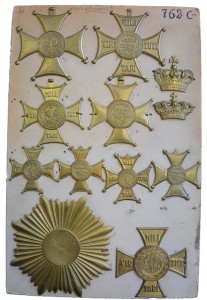 Origins of the Virtuti Militari cross reach to the late XVIII century. In 1972 Polish king Stanisaw August establish new order, the highest decoration for military virtues, as it was said directly by the order name. First decorations were made in the form of oval medal on a ribbon, worn under the neck. Later decoration was turned into the form of cross. After the collapse of first Polish Republic the order was renewed in times of Grand Duchy of Warsaw, November Uprising and in 1921 as a highest military decoration of second Polish Republic. Since this time decoration has a form of a maltan cross with eagle in the center medallion and VIRTUTI MILITARI devise on the arms. It is divided in to five classes that differ in their look and shape. Two highest classes have separate stars worn on a left part of the uniform.
Origins of the Virtuti Militari cross reach to the late XVIII century. In 1972 Polish king Stanisaw August establish new order, the highest decoration for military virtues, as it was said directly by the order name. First decorations were made in the form of oval medal on a ribbon, worn under the neck. Later decoration was turned into the form of cross. After the collapse of first Polish Republic the order was renewed in times of Grand Duchy of Warsaw, November Uprising and in 1921 as a highest military decoration of second Polish Republic. Since this time decoration has a form of a maltan cross with eagle in the center medallion and VIRTUTI MILITARI devise on the arms. It is divided in to five classes that differ in their look and shape. Two highest classes have separate stars worn on a left part of the uniform.
Since 1921 crosses of different classes were produced by number of manufacturers in Poland and some other foreign countries. Most common foreign productions came from France. Traditionally France was the country were fled many Polish officers oppressed by Russian occupant for their participation in Napoleon’s campaigns and November Uprising in years 1830-1831. Many of them ordered beautiful Virtuti Military crosses in French jewelry manufactures. Reputation gained in XIX century lasted and was confirmed by new producers. Later, during World War II number of decorations were produced in United Kingdom. They were made on demand of Polish government on exile and for private demands. Most popular were crosses made by Spind and Son.
Still there is very little known about this foreign productions. Till 1989 Poland was cut of from possibilities of free research in western archives due to restrictions put by communistic government. Therefore knowledge about foreign productions of Virtuti Militari crosses is based rather on empirical observations, than on documents. History is being brought from mouth to mouth and not always represents the highest level of accuracy. One of those inaccurate stories is about so called ‘Italian Virtuti Militari’.
It is not so common knowledge, but still easy to obtain that those crosses were produced by Picchiani and Barlacchi in Florence. This was a reputable company established in 1896 by Gastone Picchiani. In 1915 Bruno Barlacchi joined the company and it’s working until this day in the same town. During World War II they produced number of badges for II Corp of Polish Army in Italy. This led some collectors to conclusion that Virtuti Militari of this production had to be made on demand of Polish officials some time at the end of the war.
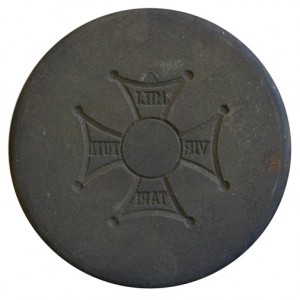
This would be very attractive from the collectors point of view. Still there are few signs that make this nice story doubtful. First of all, there is not even one P&B cross with confirmed attribution to an awarded person from this time. On the other hand there are attributed crosses from this time, made by Spink and Son. Secondly the picture of the cross is very modern for a middle of the 40’ties. Third, all the preserved crosses are at least in a very good condition.
To solve the puzzle I put my first steps to P&B factory in Florence, where I met with company archivist Chiara Montauti. She showed me a plaque with sample prints for Virtuti Militari cross and some of the preserved stamps. Unfortunately she couldn’t help me more because company lost most of the documentation. I tried to find company documentation in City Archive of Florence (Archivio storico del Comune di Firenze). Due to Italian law each company is obliged to donate their documentation to public archives after some time. Unfortunately files of particular companies that were held in this archive were destroyed during the flood of the city in 1966. By this point I doubted if I will get any information.
Fortunately I met Massimo Peruzzini, a distinctive Florence dealer with medals and decorations. Several years ago he bought from Picchiani and Barlacchi number of cases presenting Virtuti Militari crosses in all classes. Each cross had a small paper with information about the size and weight of the cross. He couldn’t tell me more, but was kind enough to ask one of his older clients, who is an reputable badges collector in Florence. He said that due to his information crosses produced by Picchiani and Barlacchi were made on the order of Polish government on exile, but not in the 40’ties. By his knowledge in the beginning of 60’ies Polish government on exile found decorations produced by Spink and Son too expensive and was looking for a cheaper supplier. They thought about Picchiani and Barlacchi as a former supplier of Polish army. By his memory the crosses occurred some time between 1960-1965.
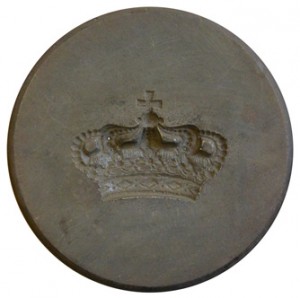
Polish government didn’t buy all the production and some crosses were left at Picchiani and Barlacchi. In 90’ies factory had some major financial problems due to already made, but unpaid big order. At this time they decided to sell all inventory left on stock. In this number there were also sets bought by Massimo Peruzzini. It is a question if the crosses known on the collectors market in years prior to Picchiani and Barlacchi financial problems came out of the factory or from the Polish government on exile? They are surely known on Polish market since late 60’ties. One is sure, despite many questions from collectors, Chiara Montauti says that there will be no restrike of the cross in the future. Unless she is in the company, she adds…
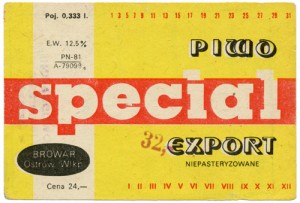 Jakiś czas temu trafiłem na dwie etykiety piwa Special Export, z którymi wiąże się pewna ciekawostka. Na ich odwrocie zostały wydrukowane przepustki wewnętrzne Aresztu Śledczego w Gorzowie Wielkopolskim. Obie przepustki to niewypełnione druki, choć posiadają pieczątki i podpisy dowódców zmiany. Jednym z nich jest chor. Jan Grzęda. Drugi podpis jest nieczytelny.
Jakiś czas temu trafiłem na dwie etykiety piwa Special Export, z którymi wiąże się pewna ciekawostka. Na ich odwrocie zostały wydrukowane przepustki wewnętrzne Aresztu Śledczego w Gorzowie Wielkopolskim. Obie przepustki to niewypełnione druki, choć posiadają pieczątki i podpisy dowódców zmiany. Jednym z nich jest chor. Jan Grzęda. Drugi podpis jest nieczytelny.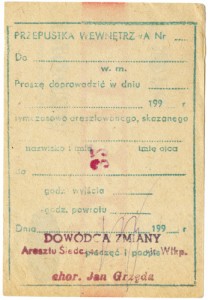 Pewną wskazówką jest także cena piwa wyrażona na etykiecie. Pierwotny nadruk opiewa na 24 zł. Cena ta została poprawiona przez dobicie pieczątką kwoty 32 zł. Wzrost ceny był najprawdopodobniej wynikiem inflacji. Ponieważ różnica między pierwotną, a poprawioną ceną wynosi 33% można przypuszczać, że sama etykieta była drukowana w 1987-1988 roku. Inflacja w tych latach wynosiła odpowiednio 25% i 65%, W kolejnym roku wynosiła już 251%, a w 1990 roku rekordowe 585 %. Tym samym zmieniły się też ceny produktów. W grudniu 1990 roku cena bochenka chleba wynosiła już 2.600 zł.
Pewną wskazówką jest także cena piwa wyrażona na etykiecie. Pierwotny nadruk opiewa na 24 zł. Cena ta została poprawiona przez dobicie pieczątką kwoty 32 zł. Wzrost ceny był najprawdopodobniej wynikiem inflacji. Ponieważ różnica między pierwotną, a poprawioną ceną wynosi 33% można przypuszczać, że sama etykieta była drukowana w 1987-1988 roku. Inflacja w tych latach wynosiła odpowiednio 25% i 65%, W kolejnym roku wynosiła już 251%, a w 1990 roku rekordowe 585 %. Tym samym zmieniły się też ceny produktów. W grudniu 1990 roku cena bochenka chleba wynosiła już 2.600 zł.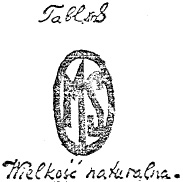 W dniu 31 grudnia 1935 r. Minister Sprawiedliwości wydał rozporządzenie w sprawie stroju urzędowego niższych funkcjonariuszy sądowych i prokuratorskich
W dniu 31 grudnia 1935 r. Minister Sprawiedliwości wydał rozporządzenie w sprawie stroju urzędowego niższych funkcjonariuszy sądowych i prokuratorskich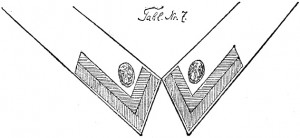 Noszenie stroju służbowego, a więc także opisywanych oznak było obligatoryjne w trakcie pełnienie służby. Choć rozporządzenie weszło w życie na początku 1936 r., to nie można jednoznacznie podać daty od której oznaki były noszone. Wynika to z faktu, że miały być wprowadzane wraz ze wymianą mundurów na nowe.
Noszenie stroju służbowego, a więc także opisywanych oznak było obligatoryjne w trakcie pełnienie służby. Choć rozporządzenie weszło w życie na początku 1936 r., to nie można jednoznacznie podać daty od której oznaki były noszone. Wynika to z faktu, że miały być wprowadzane wraz ze wymianą mundurów na nowe. Origins of the Virtuti Militari cross reach to the late XVIII century. In 1972 Polish king Stanisaw August establish new order, the highest decoration for military virtues, as it was said directly by the order name. First decorations were made in the form of oval medal on a ribbon, worn under the neck. Later decoration was turned into the form of cross. After the collapse of first Polish Republic the order was renewed in times of Grand Duchy of Warsaw, November Uprising and in 1921 as a highest military decoration of second Polish Republic. Since this time decoration has a form of a maltan cross with eagle in the center medallion and VIRTUTI MILITARI devise on the arms. It is divided in to five classes that differ in their look and shape. Two highest classes have separate stars worn on a left part of the uniform.
Origins of the Virtuti Militari cross reach to the late XVIII century. In 1972 Polish king Stanisaw August establish new order, the highest decoration for military virtues, as it was said directly by the order name. First decorations were made in the form of oval medal on a ribbon, worn under the neck. Later decoration was turned into the form of cross. After the collapse of first Polish Republic the order was renewed in times of Grand Duchy of Warsaw, November Uprising and in 1921 as a highest military decoration of second Polish Republic. Since this time decoration has a form of a maltan cross with eagle in the center medallion and VIRTUTI MILITARI devise on the arms. It is divided in to five classes that differ in their look and shape. Two highest classes have separate stars worn on a left part of the uniform.

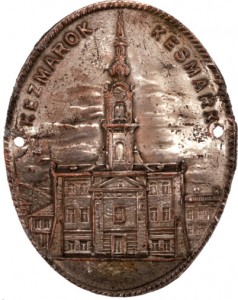 Wędrówki piesze są rozrywką o ugruntowanej tradycji, wobec czego wytworzyło się wokół nich szereg zwyczajów. Jednym z nich było nabijanie na kije wędrowne lub laski, blaszek z wytłoczonymi wizerunkami miejsc do których dotarł turysta. W sposób naturalny zjawisko to stało się szczególnie popularne tam, gdzie było więcej pretekstów do pieszych wycieczek, a poszczególne destynacje nie były łatwo dostępne – czyli w górach.
Wędrówki piesze są rozrywką o ugruntowanej tradycji, wobec czego wytworzyło się wokół nich szereg zwyczajów. Jednym z nich było nabijanie na kije wędrowne lub laski, blaszek z wytłoczonymi wizerunkami miejsc do których dotarł turysta. W sposób naturalny zjawisko to stało się szczególnie popularne tam, gdzie było więcej pretekstów do pieszych wycieczek, a poszczególne destynacje nie były łatwo dostępne – czyli w górach.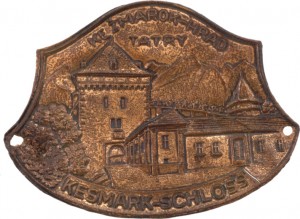 Choć nie potrafię łatwo wyjaśnić tego zjawiska wydaje mi się, że zbieranie “nabijek” jest szczególnie popularne w Czechach. W języku Czeskim nazywają się one “štítek na hůl”. W internecie można znaleźć nawet
Choć nie potrafię łatwo wyjaśnić tego zjawiska wydaje mi się, że zbieranie “nabijek” jest szczególnie popularne w Czechach. W języku Czeskim nazywają się one “štítek na hůl”. W internecie można znaleźć nawet 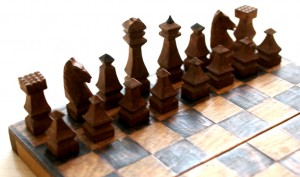
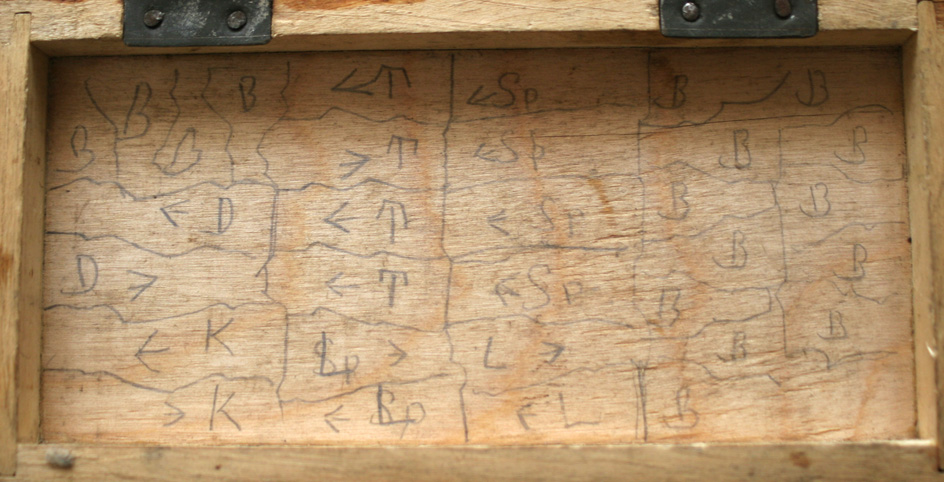 Niestety nie potrafię odgadnąć znaczenia tego schematu. Przypuszczałem, że może on symbolizować rozmieszczenie budynków w jakiejś części obozu. Zastanawiałem się czy nie ma związku z działalnością konspiracyjną generała Chmurowicza. Według książki H. Tomiczka i M.S. Zarudzkiego, “Jeniecka konspiracja wojskowa w Oflagu II C Woldenberg“, Poznań 1989, s. 42-43, w 1942 roku objął on kierownictwo nad konspiracją obozową. Była by to bardzo atrakcyjna interpretacja, ale niestety nie jestem w stanie jej zweryfikować. Być może ktoś z czytelników potrafił będzie zinterpretować znaczenie znaków widocznych na zdjęciu powyżej?
Niestety nie potrafię odgadnąć znaczenia tego schematu. Przypuszczałem, że może on symbolizować rozmieszczenie budynków w jakiejś części obozu. Zastanawiałem się czy nie ma związku z działalnością konspiracyjną generała Chmurowicza. Według książki H. Tomiczka i M.S. Zarudzkiego, “Jeniecka konspiracja wojskowa w Oflagu II C Woldenberg“, Poznań 1989, s. 42-43, w 1942 roku objął on kierownictwo nad konspiracją obozową. Była by to bardzo atrakcyjna interpretacja, ale niestety nie jestem w stanie jej zweryfikować. Być może ktoś z czytelników potrafił będzie zinterpretować znaczenie znaków widocznych na zdjęciu powyżej?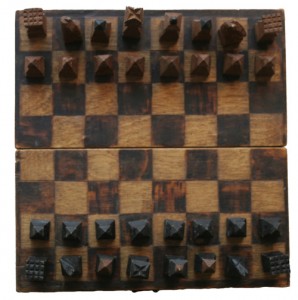
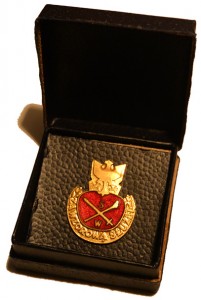 Odznaka wzorowego funkcjonariusza służby więziennej została ustanowiona ustawą o Służbie Więziennej
Odznaka wzorowego funkcjonariusza służby więziennej została ustanowiona ustawą o Służbie Więziennej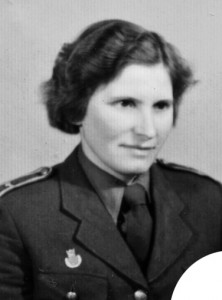 Zarządzenie określało wygląd odznaki następująco: „Dolną część odznaki stanowi nieforemne, od góry nie zamknięte koło, zakończone fragmentami liści laurowych oraz napisem “Za wzorową służbę”. Wewnątrz koła na czerwonym tle umieszczony jest miecz skrzyżowany z pochodnią i literami “SW”. Górną część odznaki stanowi stylizowany orzeł. Wysokość odznaki wynosi 30 mm, a szerokość 25 mm.”
Zarządzenie określało wygląd odznaki następująco: „Dolną część odznaki stanowi nieforemne, od góry nie zamknięte koło, zakończone fragmentami liści laurowych oraz napisem “Za wzorową służbę”. Wewnątrz koła na czerwonym tle umieszczony jest miecz skrzyżowany z pochodnią i literami “SW”. Górną część odznaki stanowi stylizowany orzeł. Wysokość odznaki wynosi 30 mm, a szerokość 25 mm.”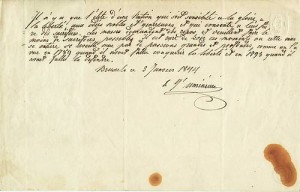
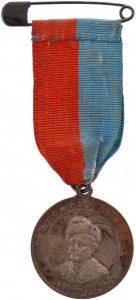
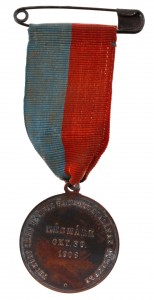 Imre Tököli był węgierskim magnatem, który urodził się w 1657 roku w Kieżmarku. Zasłynął tym, że przewodził powstaniu antyhabsburskiemu w latach 1678-1686. Jako sprzymierzeniec i wasal Imperium Osmańskiego przyjął tytuł króla Górnych Węgier, a więc ziem obejmujących dzisiejszą wschodnią i środkową Słowację. Brał udział w oblężeniu Wiednia w 1683 roku. Kiedy wyczuł, że próba zdobycia miasta nie zakończy się sukcesem, próbował za pośrednictwem króla Jana III Sobieskiego negocjować warunki przejścia swojej armii na stronę austriacką. Jako zasadniczy warunek stawiał przyznanie praw religijnych protestantom. Na marginesie można wspomnieć, że część korespondencji jaką kierował Tököli do Sobieskiego oferowana była kilka lat temu przez jeden z Austriackich antykwariatów.
Imre Tököli był węgierskim magnatem, który urodził się w 1657 roku w Kieżmarku. Zasłynął tym, że przewodził powstaniu antyhabsburskiemu w latach 1678-1686. Jako sprzymierzeniec i wasal Imperium Osmańskiego przyjął tytuł króla Górnych Węgier, a więc ziem obejmujących dzisiejszą wschodnią i środkową Słowację. Brał udział w oblężeniu Wiednia w 1683 roku. Kiedy wyczuł, że próba zdobycia miasta nie zakończy się sukcesem, próbował za pośrednictwem króla Jana III Sobieskiego negocjować warunki przejścia swojej armii na stronę austriacką. Jako zasadniczy warunek stawiał przyznanie praw religijnych protestantom. Na marginesie można wspomnieć, że część korespondencji jaką kierował Tököli do Sobieskiego oferowana była kilka lat temu przez jeden z Austriackich antykwariatów.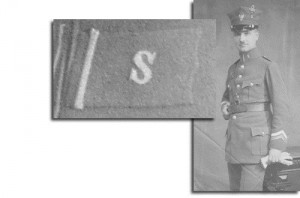
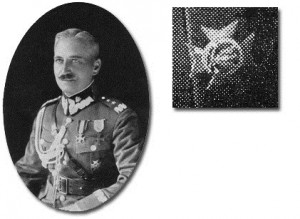
 Gorąco polecam książkę prof. Jerzego Stelmacha “Uporczywe upodobanie. Zapiski kolekcjonera“. Czytałem ją jakiś czas temu, ale cały czas pozostaje w mojej pamięci. Autor doskonale rozszyfrował duszę kolekcjonera. Bardzo trafnie opisuje też osoby uczestniczące w rynku kolekcjonerskim. Dużym atutem książki jest język i wciągający styl pisania. Publikacja nie jest obszerna ale widać, że jest dobrze przemyślana. Dodatkową zaletą jest schludna kompozycja składu i ilustracje pochodzące z kolekcji autora.
Gorąco polecam książkę prof. Jerzego Stelmacha “Uporczywe upodobanie. Zapiski kolekcjonera“. Czytałem ją jakiś czas temu, ale cały czas pozostaje w mojej pamięci. Autor doskonale rozszyfrował duszę kolekcjonera. Bardzo trafnie opisuje też osoby uczestniczące w rynku kolekcjonerskim. Dużym atutem książki jest język i wciągający styl pisania. Publikacja nie jest obszerna ale widać, że jest dobrze przemyślana. Dodatkową zaletą jest schludna kompozycja składu i ilustracje pochodzące z kolekcji autora.